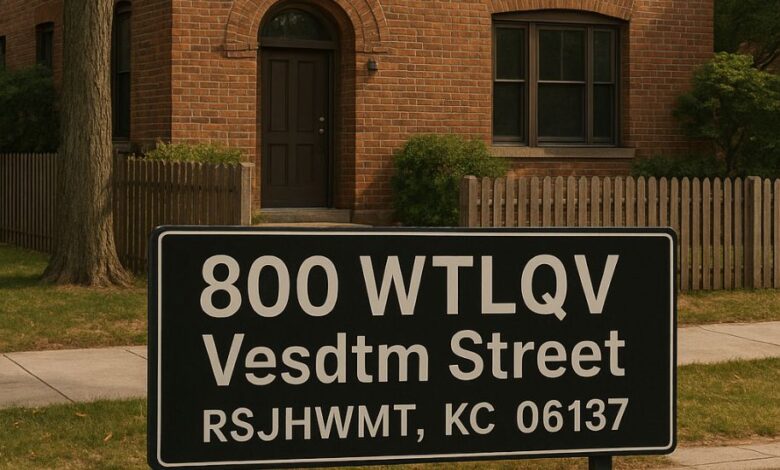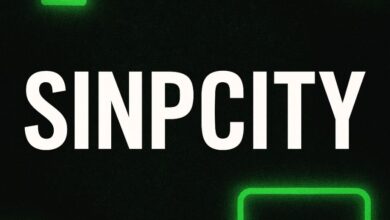Uncovering the Mystery of 800 WTLQV Vesdtm Street RSJHWMT KC 06137

Every so often, the internet births something strange enough to capture a quiet but persistent buzz — a phrase, a location, an odd query that spreads across blogs, forums, and social feeds.
One of the newest and most intriguing examples is the curious address:
800 WTLQV Vesdtm Street, RSJHWMT, KC 06137
At first glance, it looks like any ordinary address — a house number, a street name, a district, a city, and a ZIP code. But the deeper you dig, the more the structure starts falling apart. The street name does not appear on any map. The neighborhood “RSJHWMT” exists nowhere in Kansas City or anywhere else. And the ZIP code 06137 belongs to Connecticut, not Missouri or Kansas.
Yet—despite all these contradictions—blogs, micro-sites, SEO experiments, AI-scraped pages, and niche content mills have spent months describing this location as if it were a hidden cultural hub, a historic residential corner, or a budding artistic district.
So how did this fictional address become an internet-wide mini-phenomenon?
Why are so many blogs describing it as if it’s a real place?
And how can an invented address tell us something surprisingly real about digital culture, content ecosystems, and the way online “places” form out of pure imagination?
This article dives into all of that — the myth, the origins, the patterns, the psychological hooks, and the strange cultural life of 800 WTLQV Vesdtm Street RSJHWMT KC 06137.
The Birth of a Phantom Address
To understand the popularity of the address, you have to start with the raw strings themselves.
“WTLQV,” “Vesdtm,” and “RSJHWMT” feel like English, but they aren’t. They mimic the rhythm of street names — a capital letter, a mix of consonants and vowels, a pattern that looks real at a glance.
This structure is common in AI-generated names, SEO keyword experiments, and synthetic addresses often created to:
-
Test search engine indexing
-
Prevent copyright or trademark conflicts
-
Build “safe” fictional locations for writing or training
-
Generate content that seems specific, while being generic
The combination of these elements — an authoritative number “800,” a street label, a neighborhood abbreviation, and a city code “KC” — instantly tricks the brain into assuming realism. It’s just believable enough.
But when curious readers or researchers look closer, everything collapses.
No U.S. postal database recognizes the address.
No satellite map yields a match.
No regional history includes these names.
And that’s precisely where the fascination begins.
How Blogs Turned an Empty Address Into a “Place”
The strange part isn’t that the address is fake. The strange part is how much effort dozens of blogs have put into describing it as if it’s a charming hidden corner of Kansas City.
Many blog posts (likely produced by automated content mills) paint vivid scenes:
-
Tree-lined streets
-
Old brick buildings
-
Friendly local cafés
-
Murals and art corners
-
Invented neighbors and business owners
-
“Historic districts” built in the early 1900s
-
Rising real-estate values
None of these details match any real place — they simply imitate the classic formula of “hidden gem neighborhood” articles. Once the first few descriptions appeared online, others copied and remixed them. Before long, a loose, fictional “world” began forming around the address.
This phenomenon is a fascinating example of algorithmic folklore — stories that arise not from human communities passing down traditions, but from algorithms remixing content and readers interpreting the results.
Like old folklore, this address has:
-
Characters (invented locals)
-
A setting (a non-existent Kansas City district)
-
A timeline (fictional histories describing its growth)
-
A personality (creative, quiet, artistic, “undiscovered”)
Through repetition, this digital echo chamber makes the nonexistent feel oddly tangible.
Why the ZIP Code Blows the Mystery Wide Open
While many details about the fictional neighborhood still pass as plausible, the ZIP code 06137 exposes the fabrication instantly.
06137 belongs to Connecticut, not Kansas or Missouri.
Kansas City ZIP codes start with 64* or 65*.
Missouri ZIP codes range from 630–658 depending on region.
This mismatch is the digital equivalent of a painting hung upside down in a gallery — a glaring clue that the whole scene is not what it claims to be.
Yet, oddly enough, many articles skip over ZIP code accuracy entirely.
This gives us insight into one of the underlying reasons this address spread:
Most of the articles weren’t written by humans carefully researching a location.
They were mass-generated.
Why Fake Addresses Spread Across the Internet
To understand the address’s strange popularity, we need to explore why fabricated data gets replicated so widely across the modern web. There are three big reasons:
1. SEO Testing Experiments
Unique nonsense phrases like
“800 wtlqv vesdtm street rsjhwmt kc 06137”
are gold for testing how search engines react to:
-
newly created keywords
-
niche traffic behavior
-
long-tail search patterns
-
ranking algorithms
-
content duplication penalties
Because the phrase is unique, any traffic or search behavior involving it can be measured more accurately.
Several SEO analysts use “junk addresses” exactly for this — so it’s likely someone seeded the phrase deliberately.
2. AI Content Generation Loops
Modern content mills use:
-
AI article generators
-
Scraper bots
-
Content rewriters
-
Auto-blogging platforms
When an invented address appears in one place, these systems:
-
scrape it
-
treat it as legitimate data
-
use it as input for new content
-
repeat the cycle
This is how online misinformation sometimes grows — even when the misinformation is harmless, like a fake address.
3. Human Curiosity + Mystery = Viral Potential
Users love strange, unsolved, or ambiguous content.
That’s why SCP stories, ARGs, creepypasta, fake maps, and lost-media mysteries thrive online.
This mysterious address isn’t scary — but it is:
-
odd
-
unexplained
-
detailed
-
specific
-
repeated across many blogs
-
impossible to find on a map
That combination triggers curiosity.
And curiosity fuels online spread.
The Imaginary Neighborhood of RSJHWMT
Perhaps the most fascinating part of this phenomenon is how bloggers invented the neighborhood around the address.
“RSJHWMT,” despite being nonsense, is often described as:
-
A quiet, artistic enclave
-
A turn-of-the-century residential district
-
A mix of renovated homes and small shops
-
A neighborhood with community events, murals, and local cafés
In some articles, it resembles Kansas City’s historic Westside or Crossroads districts.
In others, it feels like a small East Coast town.
In still others, it’s described like a rapidly redeveloping urban pocket with lofts and coworking studios.
This malleable identity reveals something profound:
In the digital age, a “place” does not require geography.
It only needs:
-
repeated descriptions
-
visual imagery
-
associative context
-
reader imagination
RSJHWMT is not a place in the world.
But online, it became a composite reflection of what people expect a quirky, creative neighborhood to be.
Why People Are Drawn to Fictional Addresses
There’s something quietly enchanting about fictional locations masquerading as real ones.
Think of:
-
221B Baker Street
-
742 Evergreen Terrace
-
Hill Valley, CA
-
The Overlook Hotel
-
Liberty City
We love exploring imaginary worlds — and when they mimic reality just enough, they become even more intriguing.
The address 800 WTLQV Vesdtm Street feels like a doorway to a place just slightly out of reach — a location that exists in the cracks between data and imagination. It’s not a fantasy world, nor is it a real city. It sits in a liminal space where AI, automation, and digital folklore overlap.
It’s the modern version of a campfire story told by robots.
The Cultural Significance of Synthetic Places
Though the address is fictional, the phenomenon around it is deeply real. It teaches us about:
1. The evolving nature of digital information
Online content is increasingly created by systems rather than humans. When those systems remix data, fictional places can accidentally take on lives of their own.
2. Algorithmic folklore
Instead of humans passing down stories, algorithms now replicate and mutate them.
3. Our desire for discovery
People want to find “hidden” places, even if the mystery is artificial.
4. The blending of real and fake
Not everything online needs to be factual to spark interest, creativity, or cultural conversation.
5. The future of digital storytelling
AI-generated or composite worlds may eventually form shared mythologies — not unlike fandom universes or collaborative fiction projects.
Could This Address Ever Become Real?
Interestingly, fictional places sometimes inspire real ones.
For example:
-
“Platform 9¾” in London became a real attraction.
-
“Twin Peaks” tourism surged in the Pacific Northwest.
-
Disney built entire themed towns patterned after imaginary settings.
If enough people search or talk about 800 WTLQV Vesdtm Street, something similar could happen:
-
artists might design concept art
-
urban planners might jokingly reference it
-
writers could use it as a setting
-
someone might build a fictional “RSJHWMT” directory
-
creators might launch an ARG or story world based on it
The internet has a way of turning imagination into reality — or at least something that feels real.
Conclusion: The Address That Lives Only in the Internet’s Imagination
In the end, 800 WTLQV Vesdtm Street RSJHWMT KC 06137 is not a place you can visit, photograph, or enter into a GPS. But that doesn’t make it meaningless. In a strange way, it represents a new kind of digital-era folklore — a story formed not by human rumor but by automated content, repeated patterns, and collective curiosity.
It is a reminder that the internet doesn’t just reflect the world; sometimes it invents new corners of it.
And as long as people continue searching, reading, and wondering, this fictional-yet-persistent address will continue to live on — not in Kansas City, not in Connecticut, but in the ever-expanding map of the digital imagination.
As this mystery continues to grow, you can follow more discussions, breakdowns, and unusual internet phenomena on Blog Loom — where online curiosities are woven into stories worth exploring.
You may also read: Gayfirir: Meaning, Identity, and Cultural Impact Explained


